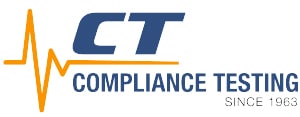Get Free Help From Our Engineers With EMC Testing & Compliance
Need help complying with EMC regulations for electronics? We work with businesses and individuals across the country, including in New York, to achieve compliance with FCC, CE and other EMC regulations.
Click the “Talk to Our Team” button or call us on 866-540-5287 to ask our engineers your question about EMC compliance, or request a free quote for EMC testing and achieving FCC, CE and other forms of equipment authorization for your device.

Electromagnetic interference (EMI) is a common, important concern in the world of electronics manufacturing. It refers to any disturbances in electrical circuits that are caused by an external source by electromagnetic induction, coupling, or conduction.
Put more simply, electromagnetic interference occurs when one electrical device or source of energy interferes with the functioning of another.
A classic example of EMI is the buzzing or crackling sound that can come from speakers or a set of headphones when a cell phone receives a call or message.
Another common example of EMI is a reduction in Wi-Fi signal strength that occurs when you use a microwave oven or other appliance.
These issues occur as a result of electromagnetic waves emitted by one device — often in the same frequency range as similar devices — causing interference and preventing other devices from functioning normally.
Most EMI occurs as a result of electronic devices. However, natural events, including lightning, strong sunlight, and others can also cause interference that affect certain types of devices.
EMI is closely regulated in most countries, including via FCC Part 15 in the United States and the Radio Equipment Directive (RED) in the European Union.
As an electronic device manufacturer, it’s important that you comply with EMI regulations not only to maintain market access, but also to ensure that your device functions correctly without affecting other electrical equipment.
As specialists in compliance testing, we can complete EMI and EMC testing for your device to ensure you comply with all relevant regulations. To request a quote for your device or talk with our engineering team, contact us online or call us at 866-540-5287.
You can also learn more about electromagnetic interference, EMI regulations, and the testing methods used to measure EMI, below.
Why is EMI Regulated?
Many electronic devices produce emissions. These include electromagnetic fields that spread from the device’s structure (referred to as radiated emissions) and emissions that travel via a device’s power cord and interconnected cables (conducted emissions).
These emissions can cause electromagnetic interference, which may prevent other devices in the same room or building as a device with significant emissions from functioning properly.
Electromagnetic interference can affect devices in both residential and industrial settings. In a home or apartment, electromagnetic interference from one device may stop a TV from having the clear signal it needs to function correctly, or affect Wi-Fi signal strength.
In an industrial environment, EMI may cause devices to malfunction, result in inaccurate data from measurement equipment, cause data corruption, or lead to safety issues.
Because of this, EMI is strictly regulated in most countries. Regulation of EMI plays a vital role in ensuring that devices function properly without interference or interruption — a necessity due to the proliferation of electronic devices at home and at work today.
Common EMI Regulations
FCC Part 15
In the United States, the Federal Communications Commission (FCC) outlines regulations for electromagnetic interference under Part 15 of its rules. Part 15 regulations restrict EMI from a range of devices to ensure they don’t interfere with TV, radio or other communications.
Compliance with Part 15 is mandatory for electrical and electronic products sold in the United States, including consumer and industrial devices.
EU Radio Equipment Directive (RED)
In the European Union and European Economic Area, the Radio Equipment Directive, or RED, serves a similar purpose to FCC Part 15 in the United States.
The Radio Equipment Directive sets out essential requirements for radio equipment, including EMI, to ensure that electronic devices sold in the EU meet minimum standards for safety and user health, as well as effective use of the radio spectrum.
Like FCC Part 15 in the United States, compliance with the RED is mandatory for devices sold in the European Union and European Economic Area.
How to Reduce EMI
Complying with EMI regulations such as FCC Part 15 and the RED often means using methods to reduce electromagnetic emissions from your device.
Common methods for reducing EMI include:
- Shielding. This involves enclosing your device or its internal components in conductive or magnetic materials to block electromagnetic fields. Common materials include metal cases, screens and/or foils.
- Grounding. Effective grounding methods can help to dissipate EMI. Effective grounding often involves grounding your device’s chassis, or using ground planes on printed circuit boards to allow EMI to flow away from sensitive internal components.
- EMI filters. Some components, such as inductors, capacitors, ferrite beads and voltage suppressors, can help to filter electromagnetic interference and reduce your device’s risk of being affected by interference.
- PCB layout. Optimization of your printed circuit board layouts can reduce your device’s susceptibility to electromagnetic interference.
- Spread spectrum technology. Use of spread spectrum technology, which spreads your device’s signal over wider bandwidth, can make its signal less susceptible to interference and provide protection against EMI.
As specialists in EMI testing and compliance, our team can recommend steps that you can take to minimize interference and ensure your device complies with regulations. Contact us online or call us at 866-540-5287 to talk to our engineers about reducing EMI and achieving compliance.
Focuses in EMI Testing
To comply with FCC Part 15, the Radio Equipment Directive and other regulations, devices must undergo EMI testing. EMI testing encompasses numerous aspects, including radiated emissions and susceptibility, as well as conducted emissions and susceptibility.
Radiated Emissions
Radiated emissions testing involves measuring emissions of electromagnetic energy from your device. These emissions can interfere with other devices, causing them to malfunction, produce inaccurate readings, or stop working.
Testing for radiated emissions ensures that your device’s emissions are within the levels allowed by regulations, such as FCC Part 15 or the RED.
Radiated Susceptibility
Radiated susceptibility testing assesses how sensitive your device is to electromagnetic energy from other devices. This type of testing determines whether electromagnetic radiation can affect your device’s operation and functioning.
Conducted Emissions
Conducted emissions testing involves measuring electromagnetic energy that’s emitted from your device via its power cord or other cables. These emissions can travel along power lines, causing interference with other devices operating on the same network.
Conducted Susceptibility
Finally, conducted susceptibility testing checks how vulnerable your device is to EMI carried through power lines or signal lines. This form of testing is important for ensuring that devices can function in environments where EMI may be introduced through conductive paths.
Contact Us to Discuss EMI Testing & Compliance
Carrying out EMI testing is an important part of complying with electromagnetic compatibility regulations, including FCC Part 15 in the United States, the Radio Equipment Directive in the European Union, and additional regulations in other markets.
As an accredited electronics testing lab, we can complete testing for your device to measure electromagnetic compatibility and ensure your device complies with relevant regulations.
To request a quote for testing your device, ask our engineers a question, or talk to our team about the testing process, contact us online or call us at 866-540-5287.
Request a Free Quote From Our Team
Please enter your name, contact information, and any information about your device and the type of testing you need into the form below. Our team of engineers and compliance specialists will contact you as soon as possible with a free quote for your project.




